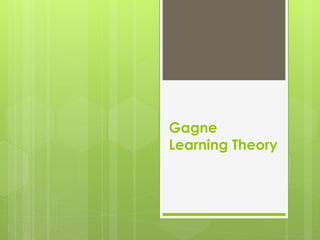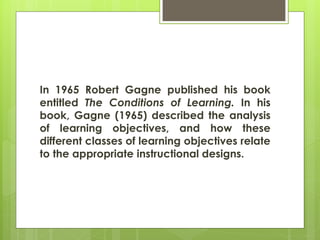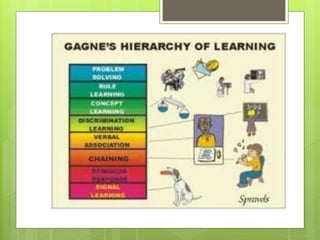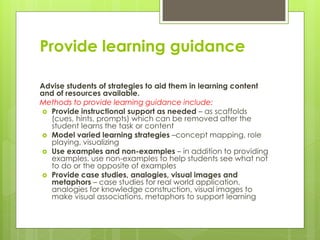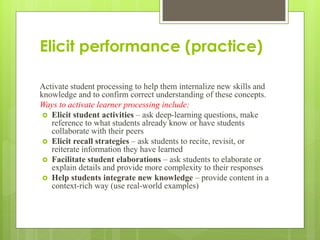Robert Gagné was an educational psychologist known for his theory of instruction called the "Conditions of Learning". He studied how learning objectives relate to instructional design. Gagné identified 9 types or levels of learning - signal learning, stimulus-response learning, chaining, verbal association, discrimination learning, concept learning, rule learning, problem solving, and attitudes. Each type of learning requires different instructional events and conditions to be effectively taught.
